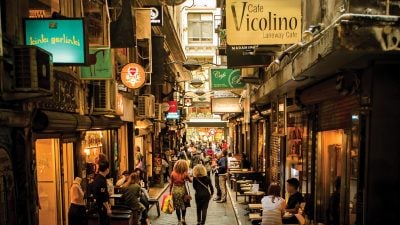Home / UK & Europe / Explore the Treasures of Vatic…
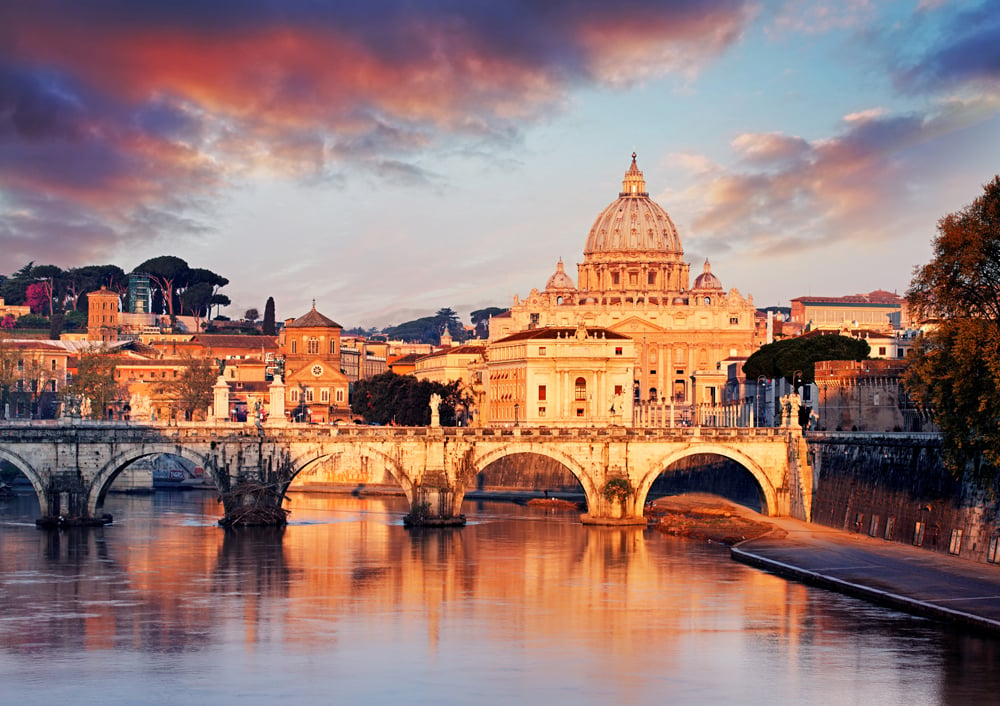
Explore the Treasures of Vatican City on an Italy Vacation
It’s easy to forget that Vatican City is its own country when you visit on an Italy vacation. This centre of the Roman Catholic Church occupies half a square kilometre in the heart of Rome, Italy’s capital, and belongs on the list of the best places to visit while in the city (we even included it in our own piece about the 10 Essential Things to Do in Rome).
However, it’s easy to understate how breathtaking Vatican City is when you simply list it as yet another landmark in a city packed full of them. Beyond being the world’s smallest country, Vatican City is home to some of the most significant works of art in the world, including Michelangelo’s frescoes in the Sistine Chapel. When you’re in Rome on a trip to Italy, be sure you spend at least a day exploring the Vatican City. You won’t be disappointed.
St. Peter’s Square
While the Vatican is its own distinct nation, you won’t need to pass over any proper border to enter its domain. You simply need to walk down Via della Conciliazione to enter Piazza San Pietro or St. Peter’s Square, the massive central square of the Vatican. Designed by Gian Lorenzo Bernini in the 17th century, the square is defined by its massive stone columns that encircle you on both sides, and the presence of St. Peter’s Basilica that stands before you. Apparently, Bernini’s design for the stone columns was so exact that if you stand in the direct centre of the square, where the obelisk is, all the various rows of pillars will align perfectly. Talk about detailed architecture!
Beyond the sheer size of the square, if you visit on Sunday mornings, you’ll witness the Pope appear from a balcony overhanging the square to deliver a homily and the Angelus prayer. If you’re lucky enough to visit on certain Wednesdays, you’ll also be able to attend the general audience where the Pope greets and blesses the crowds in the square. Regardless of whether you have any interest in the rituals or traditions of the Roman Catholic Church, the architecture alone of St. Peter’s Square is enough to warrant a visit.
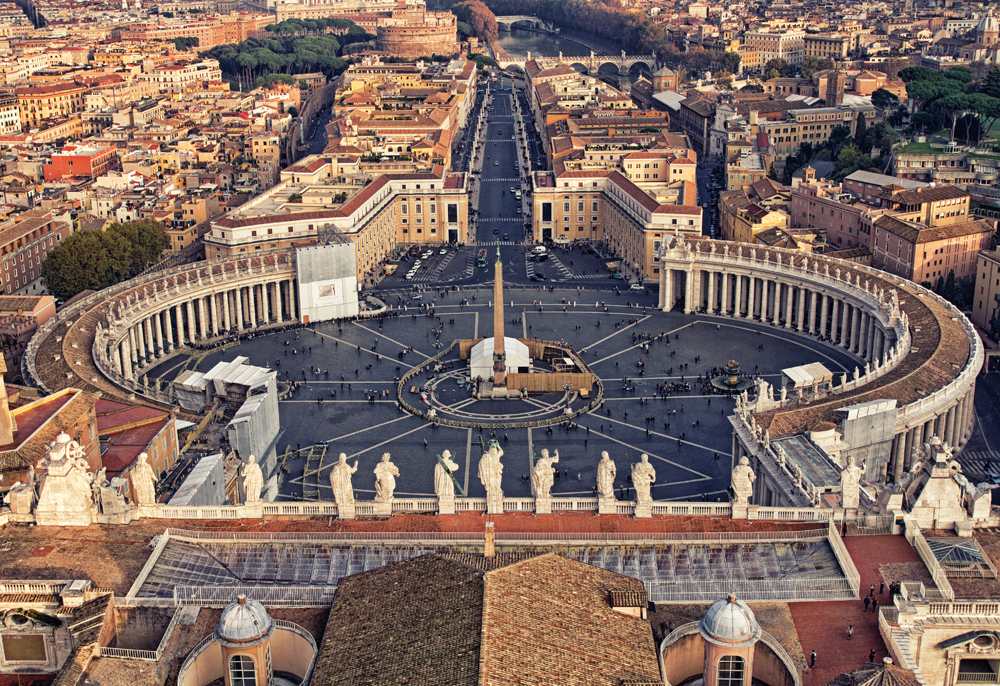
St. Peter’s Basilica
You’ll have to line up for security to enter St. Peter’s Basilica and have your bag searched and be scanned by metal detectors, but the wait is worth it to experience the building itself. The first time you enter St. Peter’s Basilica, you’ll be floored by the sheer size of the building. It’s the largest church in the world, reaching 187m long, and you can feel it when you look up to the dome and across the massive sanctuary. Look around and notice the cute marble cherubs decorating the walls. These seemingly-small statues are over 2m tall! St. Peter’s Basilica plays with scale in fascinating ways and you’ll find few buildings that are as impressive.
In the centre of the sanctuary, you’ll find Bernini’s baldachin, which sits 29m over the main altar. Its elaborate dark gold colour and corkscrew-shaped pillars are eye-catching; it’s also noticeably massive. Nearby, you’ll also find a statue of St. Peter. Pilgrims rub the right foot of the statue in order to get a blessing. The constant rubbing by visitors has even worn down the metal over the years.
However popular the statue of St. Peter is and however eye-catching the baldachin is, Michelangelo’s Pieta remains the undisputed masterpiece inside St. Peter’s Basilica. A marble carving by Renaissance master Michelangelo, the Pieta depicts Mary, the Mother of Jesus, cradling a dead Jesus in her arms. The impossibly-detailed work on Jesus’ muscles is remarkable, as is the fact that Michelangelo depicts him as having an emaciated body, which runs counter to the convention of portraying him as strong and muscular, even when depicting the crucifixion. There are few statues in all the world that are as impressive and moving as the Pieta.
Once you admire Michelangelo’s work and rub the foot of St. Peter, buy a ticket to climb the dome of the basilica to enjoy great views of Vatican City and Rome. After buying your ticket, you’ll enter a queue and have the option of taking the elevator to the roof or walking all 551 steps up the staircase. If you stop at 320 steps, you’ll get to spy on the sanctuary of the basilica from high above before reaching the roof and enjoying views of the surrounding buildings. It’s a great way to cap off your time in the basilica, while on your Italy vacation, and start your exploration of the Vatican.
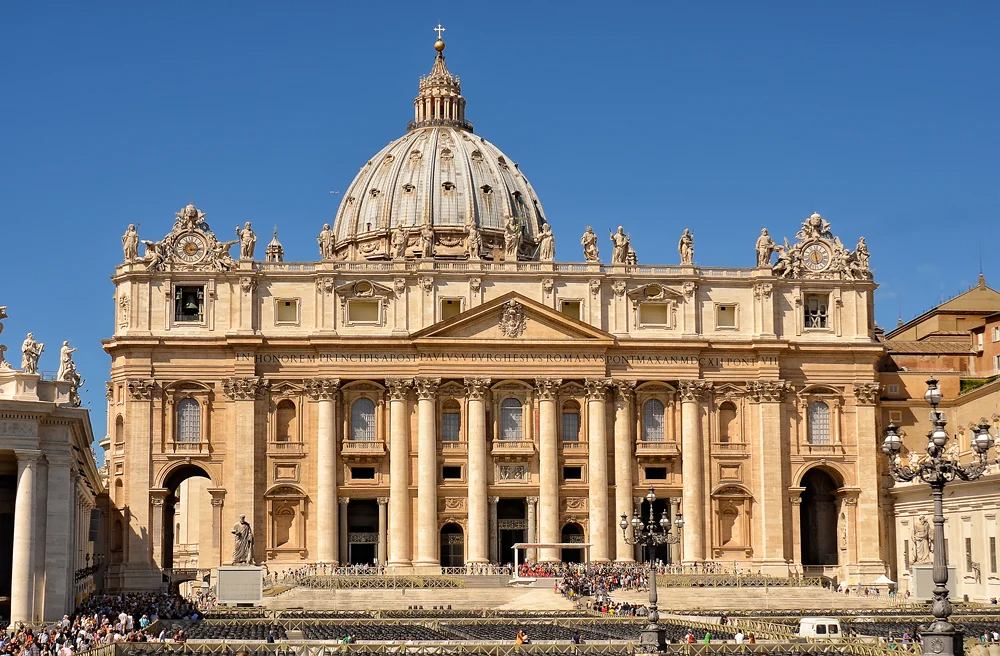
The Vatican Museums
Apart from the Louvre, there are arguably no better museums in the world than the Vatican Museums. Located in the five hectare Palazzo Apostolico Vaticano, the museums holds roughly 70,000 works of art, around which 20,000 are on display at any given time. If you were to spend just one minute to look at each work of art on display, you’d be in the museums for roughly two weeks!
Pope Julius II founded the museums in the 16th century and they’ve only grown in importance and size in the intervening years. You’ll find everything here from mummies to ancient Greek and Roman statues to Byzantine tapestries and Renaissance canvases. Join a tour to learn about the history of each work of art or wander at your leisure and focus on the artworks that fit your fancy.
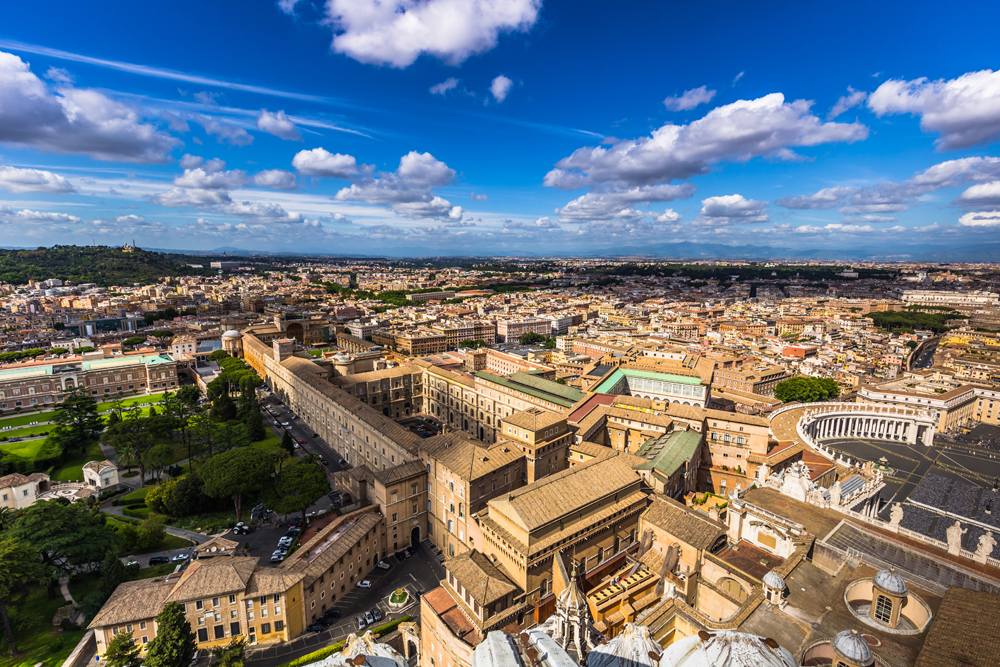
The Raphael Rooms
Of all the rooms in the Vatican Museums, there are arguably none more important than the Raphael Rooms, which feature frescoes painted by the famous master of the Renaissance, Raphael. The four rooms in the Palace of the Vatican feature 16 frescoes that are widely considered the high points of fresco artwork. The frescoes themselves depict great moments from the Bible or antiquity, such as St. Peter’s rescue from prison or the conversion and baptism of Roman Emperor, Constantine.

If you have to pick one masterwork out of the 16 frescoes, The School of Athens has to be it. This painting depicts the great thinkers and artists of Ancient Greece occupying a public space in Ancient Athens. In the middle of all the thinkers are Aristotle and Plato, the two central figures of Greek philosophy. An elderly Plato points to the heavens, indicating his focus on spirituality and the order of the universe, while Aristotle points to the ground, indicating his focus on the material world.
Beyond the important figures of the past in the painting, Raphael also painted many of his contemporaries into the fresco to pay tribute to them. For instance, Michelangelo appears as Heraclitus, who sits on the steps writing in the foreground. As well, Plato bears a remarkable resemblance to Leonardo da Vinci. Raphael even painted himself into the fresco. On the far right side of the work, a young man stares out of the frame, as if making eye contact with the viewer of the work. This is Raphael depicting himself as Apelles, an ancient Greek painter. It’s a clever way for Raphael to pay homage to the past while also taking credit for his remarkable work.
Even if you’re not the kind of person who loves to hear tour commentary when visiting museums, commentary from an expert art historian on The School of Athens will undoubtedly make the painting even more fascinating. There’s simply too much history and intricacy captured in the painting to absorb with a passing glance.
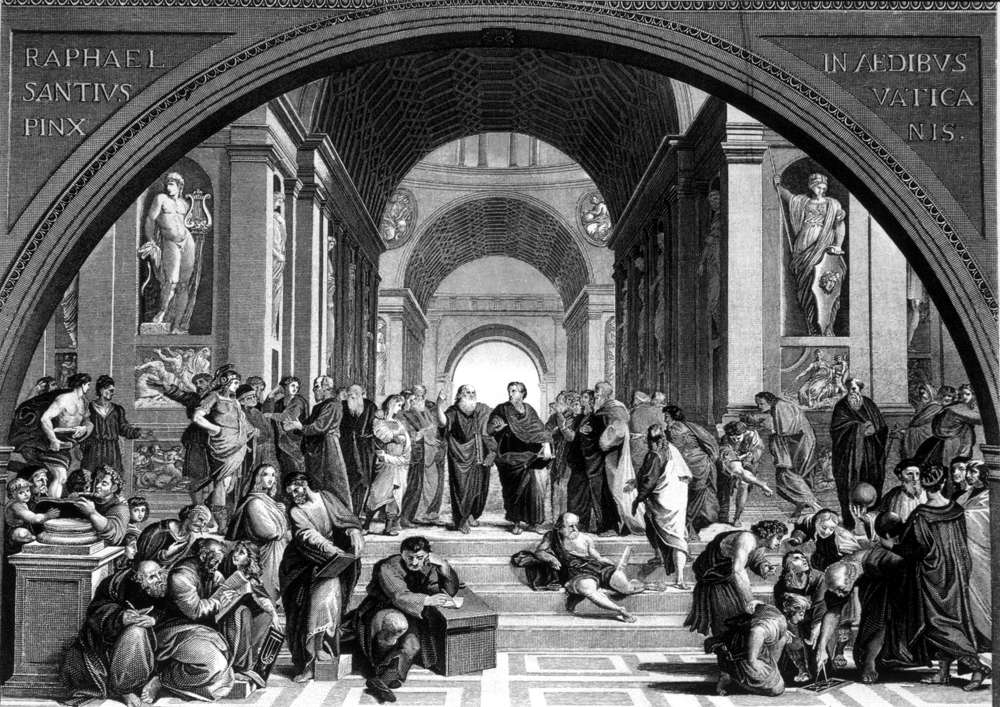
The Sistine Chapel
Aside from the Raphael Rooms, the Sistine Chapel is the great masterwork of the Vatican Museums and the culmination of the Vatican’s treasures. Inside this chapel in the Apostolic Palace, you’ll find Michelangelo’s frescoes across the ceiling and walls. Stunningly, Michelangelo painted the ceiling frescoes upside down while lying on his back on top of scaffolding.
The most famous frescoes are along the central ceiling and the altar wall. The ceiling frescoes depict key passage from the Book of Genesis, including God’s creation of Adam, Adam and Eve’s banishment from the Garden of Eden, and the Great Flood. If you pay careful attention, you can notice hidden messages within the frescoes, such as that the shape of God and the heavens in The Creation of Adam fresco resembles that of the human brain; perhaps Michelangelo was making a sly comment on religion, or simply leaving symbols for art lovers to obsess over in future ages.
On the altar wall of the Sistine Chapel you’ll find The Last Judgment, an epic floor-to-ceiling depiction of the Second Coming of Christ and the End Times. This massive artwork depicts Jesus returning to judge the living and the dead, with demons pulling sinners into hell and angels rescuing the saints to heaven. Within the dozens of figures across the fresco, Michelangelo hid the faces of people he knew in his lifetime, such as Biagio da Cesena, who was the Papal Master of Ceremonies and an embittered critic of Michelangelo; as retribution for complaining about the nudity in Michelangelo’s frescoes, Michelangelo painted Biagio’s face onto the body of the demon, Minos.
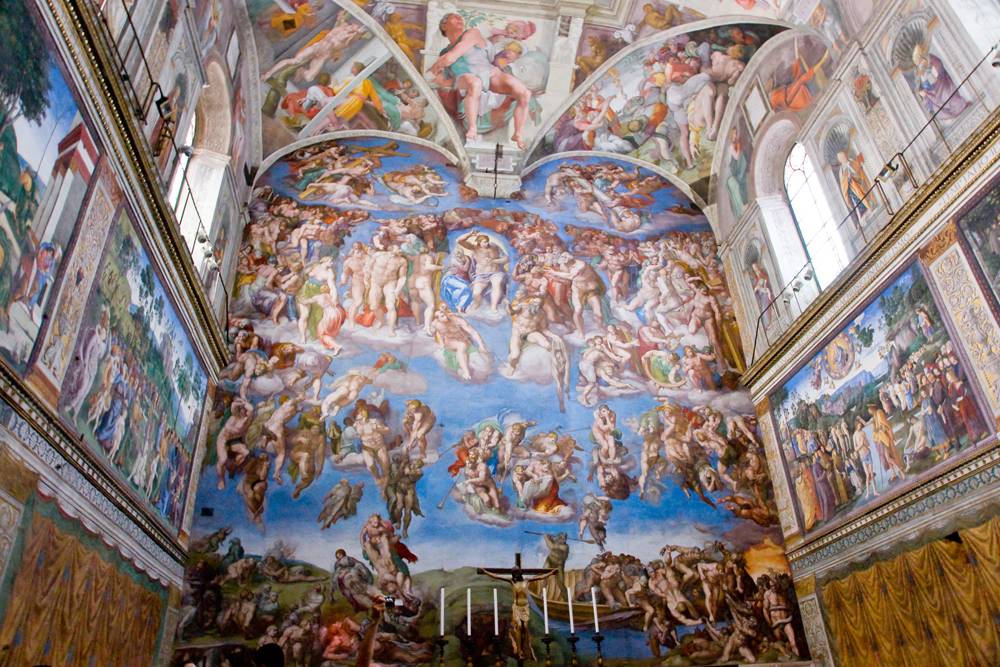
When you enter the Sistine Chapel, odds are the room will be packed to the brim with astonished onlookers. Some people will try to snap forbidden photos of the artworks, while security guards will periodically tell people to put away their cameras and keep quiet (ever since the frescoes were restored, photography has been banned in the chapel). However, no matter how much bustle there is in the room, nothing can detract from the sheer wonder of Michelangelo’s artworks. The Sistine Chapel is simply one of the greatest artworks in the world and seeing its treasures with your own eyes while on an Italy vacation is a once-in-a-lifetime experience.

The Vatican City might be the world’s smallest sovereign nation, but it’s packed with more artistic treasures than almost any other place on earth. Within its 44 hectares lie some of the great masterworks of civilization, from Michelangelo’s Pieta and the frescoes of the Sistine Chapel to Raphael’s frescoes in the Raphael Rooms to the dome of St. Peter’s Basilica and the pillars of St. Peter’s Square. A trip to Rome is not complete without a visit to this tiny nation and centre of the Roman Catholic Church. It’ll leave you astounded at the artistic wonders that humanity is capable of creating.
Get more travel inspiration by email.
Subscribe
0 Comments

Get the latest travel trends & hear about the best deals on vacations around the world.
If you’re a Globetrotter, these are the newsletters for you!
